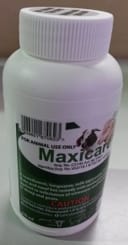DEWORMING:
Q: At what age should I deworm my calves/lambs for the first time?
A: This depends entirely on the circumstances of the farm and farming system. Lambs and calves can start nibbling at grass very early, in the first few days after birth and start ingesting worms. Many animals are dosed from 6 weeks of age onwards but often this is not necessary if no challenge exists. In cases of high challenge, particularly from wireworm it may be necessary to dose earlier than 6 weeks of age.
DOSING:
Q: What are the latest trends concerning dosing of sheep?
A: The latest trend in dosing sheep is to only dose the low percentage of animals which are showing symptoms of worm infestation such as pale mucus membranes of the eyes and mouth, bottle jaw, nasal discharge, poor condition and /or diarrhoea (The 5 point plan). In this way only the animals carrying most of the parasites are dosed while those which are showing no signs of worm burdens are not dosed. This also allows for the eggs of the resistant worms which survive the dosing to be diluted on the pasture with eggs from parasites of non-dosed animals and so helps to slow down the development of resistance.
FOR ANIMAL USE ONLY
MAXICARE®
Reg No G3145 Act 36/1947, Namibia Reg No V02/18.1.8/762 (Act 13/2003)
INDICATIONS:
A round worm, lung worm, milk tape worm, liver fluke and nasal bot remedy with residual protection against re-infestation of wireworm and hookworm in sheep and goats.
(2) Benzimidazole (4) Salicylanilide
CAUTION
STORAGE:
Store in a cool place and protect from direct sunlight
COMPOSITION:
Contains: Albendazole 1,9 % m/v and Closantel 3,0 % m/v
WARNINGS:
NOT FOR USE IN MILK GOATS WHOSE MILK IS INTENDED FOR HUMAN CONSUMPTION.
Allow 30 days between last dosing and slaughter for human consumption.
Handle with care.
Management practices should always ensure that all drenching procedures are carefully carried out. It is particularly important not to exceed the recommended dose in ewes during the mating season, or during the first month of pregnancy.
Keep out of reach of uninformed persons, children and animals.
Although this remedy has been extensively tested under a large variety of conditions, failure thereof may ensue as a result of a wide range of reasons. If this is suspected, seek veterinary advice and notify the registration holder.
PRECAUTIONS:
It is recommended that all sheep be vaccinated against Pulpy Kidney Disease before any worm remedy is administered.
Do not treat animals more frequently than every three weeks.
Wash hands thoroughly after use.
DIRECTIONS FOR USE: Use only as directed.
Use as an oral drench.
Shake well before use.
Dose rate for sheep and goats: 2,0 mℓ / 10 kg body mass.
Example:
Body mass (kg) | Dosage (mℓ) | No dosages per pack (250 mℓ) | No dosages per pack (500 mℓ) | No dosages per pack (2 ℓ) | No dosages per pack (5 ℓ) | No dosages per pack (10 ℓ) |
|---|
10 20 30 40 50 | 2,0 4,0 6,0 8,0 10,0 | 125 63 42 31 25 | 250 125 83 62 50 | 1 000 500 333 250 200 | 2 500 1 250 833 625 500 | 5 000 2 500 1 666 1 250 1 000 |
EFFICACY:
Worm Species | Adult | Immatures |
|---|
Wire worm | * | * |
Brown stomach worm | * | * |
Bankruptworm | * | * |
Long-necked bankrupt worm | * | * |
Hook worm | * | * |
Nodular worm | * | * |
Large-mouthed bowel worm | * | * |
Lung worm | * | * |
Liver fluke | * | ** (6 weeks old) |
Giant liver fluke | * | ** (8 weeks old) |
Milk tapeworm | Class 1 |
Definition: * Controls 90 – 100 % effective
** Aids in the control 60 – 89 % effective
Class 1: 100 % effective in more than 80 % of treated animals
Controls all stages of nasal bot.
Prevents roundworm eggs present in the animal at the time of dosing, from hatching.
RESIDUAL EFFECT:
Worm species | Interval between treatment and re-infestation |
|---|
Wire worm | 3 weeks |
Hook worm | 3 weeks |
PRESENTATION:
200 mℓ, 500 mℓ, 2 ℓ, 5 ℓ, 10 ℓ
REGISTRATION HOLDER:
CEVA Animal Health (Pty) Ltd
Reg. No. 1973/016009/07
P O Box 7707
Halfway House 1685
011 312 4088
PRODUCT OF SOUTH AFRICA


